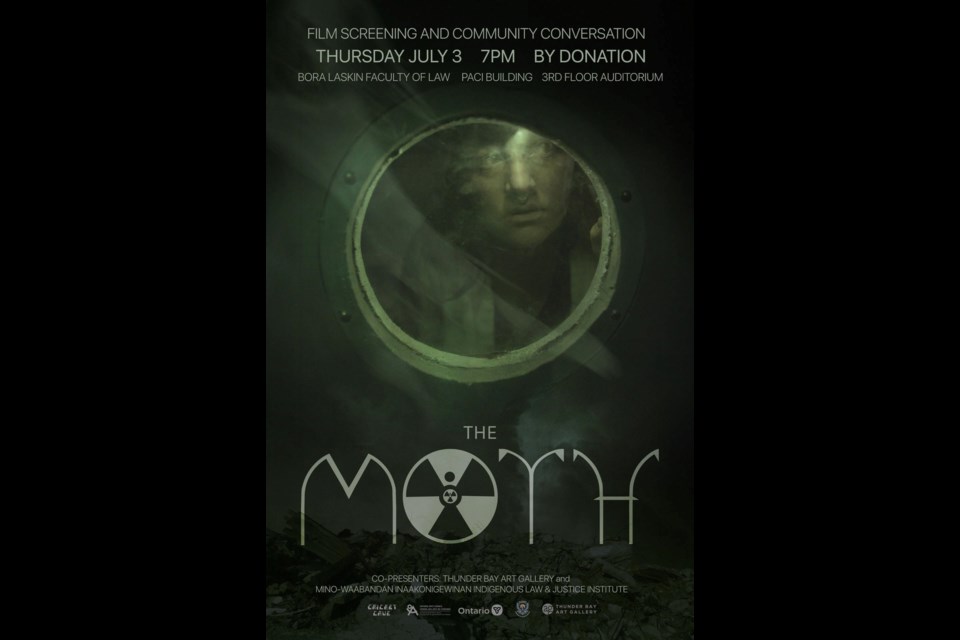THUNDER BAY — “The film is a true horror story because we are actually very horrified about what’s happening,” said Zoe Gordon, the producer of The Moth.
The locally produced short film screened at the Bora Laskin Faculty of Law on Thursday, telling the story of a First Nations woman surviving in the year 2039, after the land was overtaken by lithium mines and 100,000 tonnes of buried nuclear waste.
“Through my eyes, The Moth is really about the other and recognizing the other within yourself,” said Gordon.
“And no matter where you are, no matter how devastating things have been, you always have a way to process what’s happening to you.”
With a fully packed room, Gordon said she didn’t expect such a large turnout for the film screening.
“I kind of didn’t expect this big of a crowd, but really it makes sense actually because so many people care about the issue of land devastation,” said Gordon.
Following the screening, a panel discussion brought together the filmmakers, cast and community activists to explore the film’s connection to Bill C-5.
Many community members in attendance voiced concerns about Bill C-5, questioning the transportation methods for nuclear waste and why the proposed sites are on Indigenous land.
“It’s a dismal subject. It’s a heavy one. It’s very real,” said Sarah McPherson, an actor in the short film.
“I wasn’t really acting, I was kind of just feeling like that anticipatory grief.”
"No, you're not bringing that through our highways and community, " said Fort William First Nation Chief Michele Solomon of the nuclear waste slated to be buried in a deep geological repository near Ignace. The First Nation, alongside Grassy Narrows First Nation, organized a rally on June 4 in protest of Bill C-5 and the proposed transportation and storage of nuclear waste.
Following the discussion, activists and community members stayed and painted signs in support of the rally.
The film first premiered at the imagineNATIVE Film + Media Arts Festival, held from June 3 to 8 in Toronto and screened online from June 9 to 15, the festival celebrated Indigenous creators from around the world, with films centred on land defence and the preservation of culture.
“There were films from the Sami people, the Quechua people in Peru,"Gordon said, "and all of them were about fighting back against loss of land and loss of culture.”



